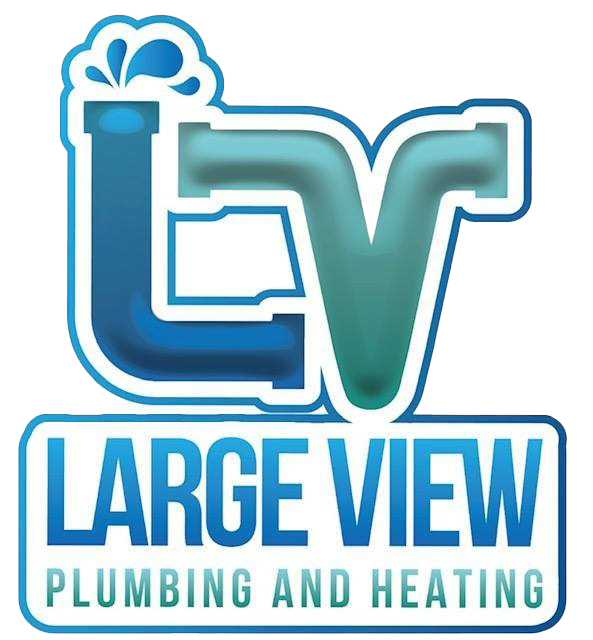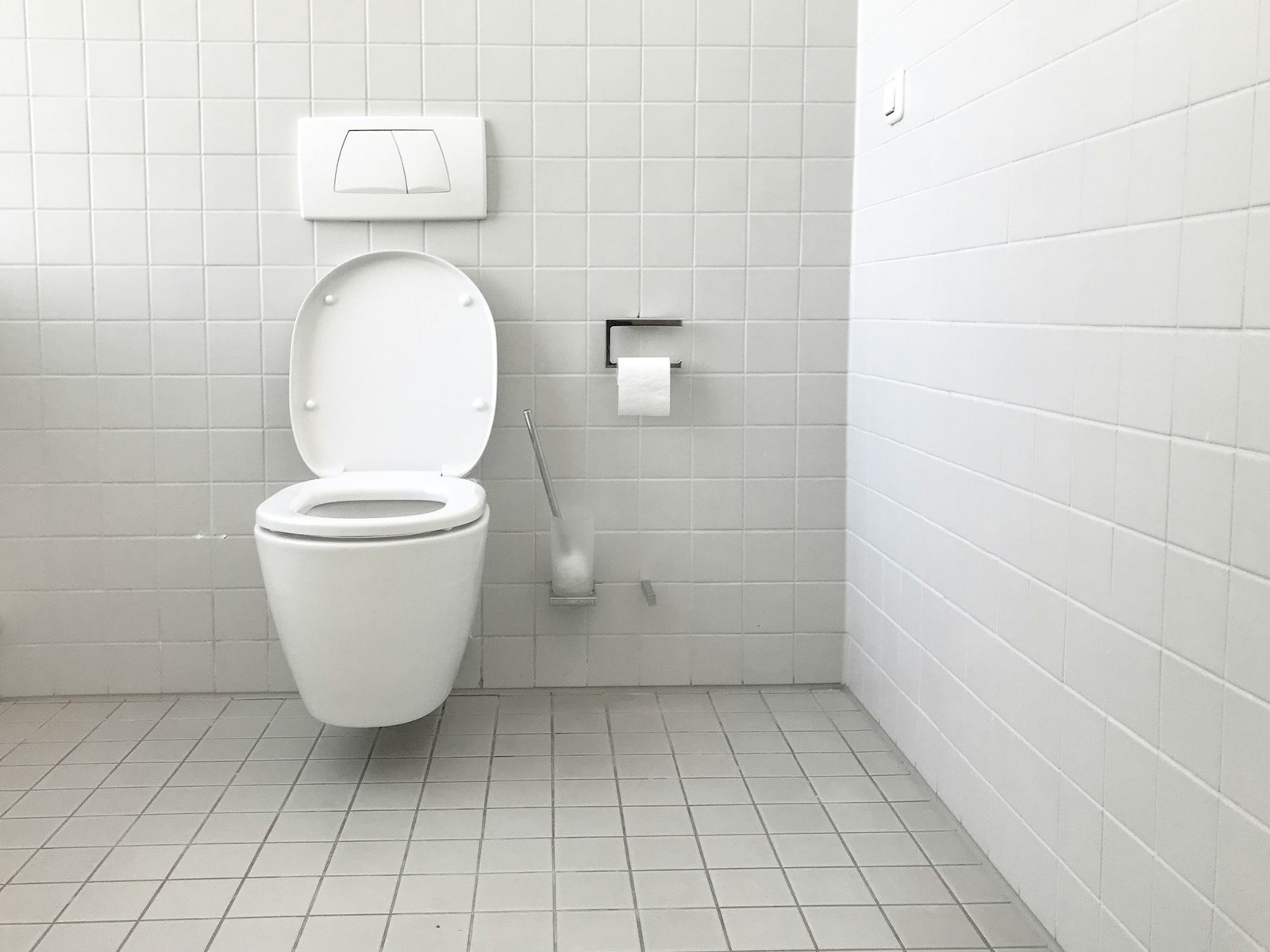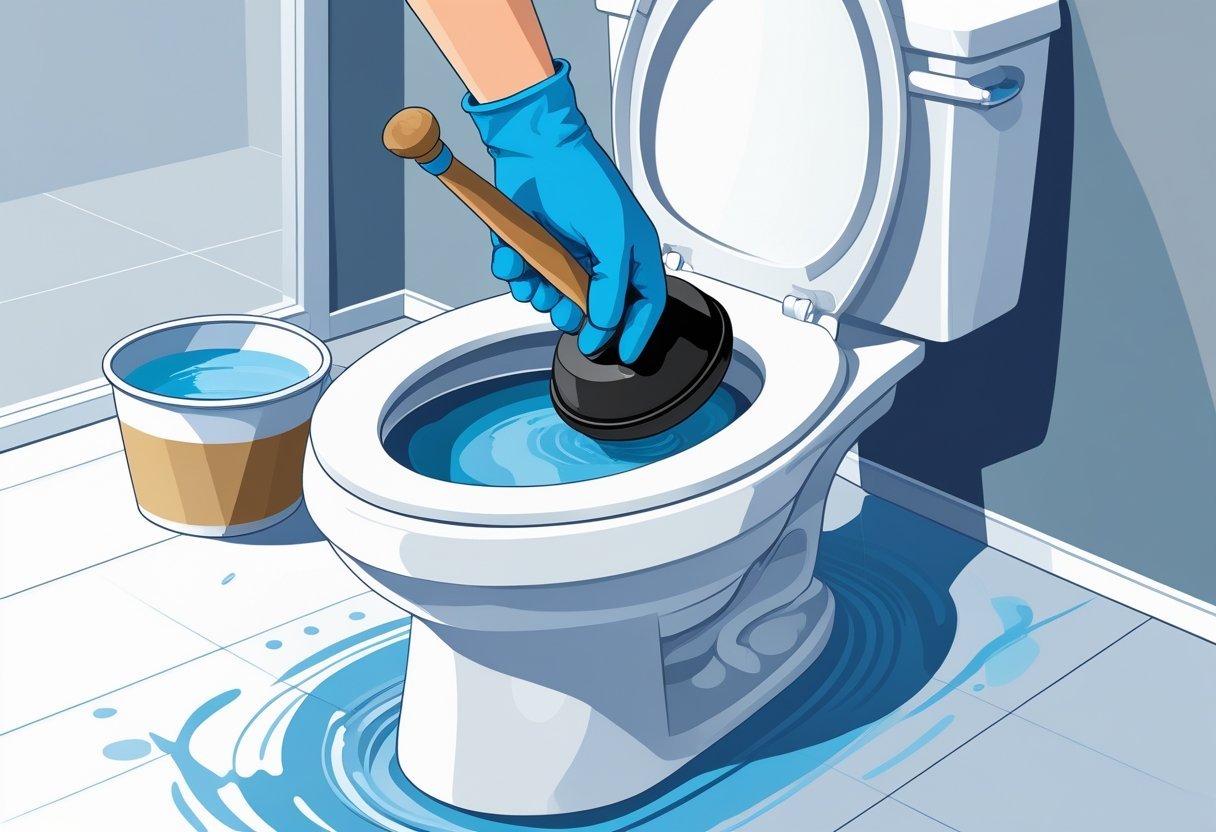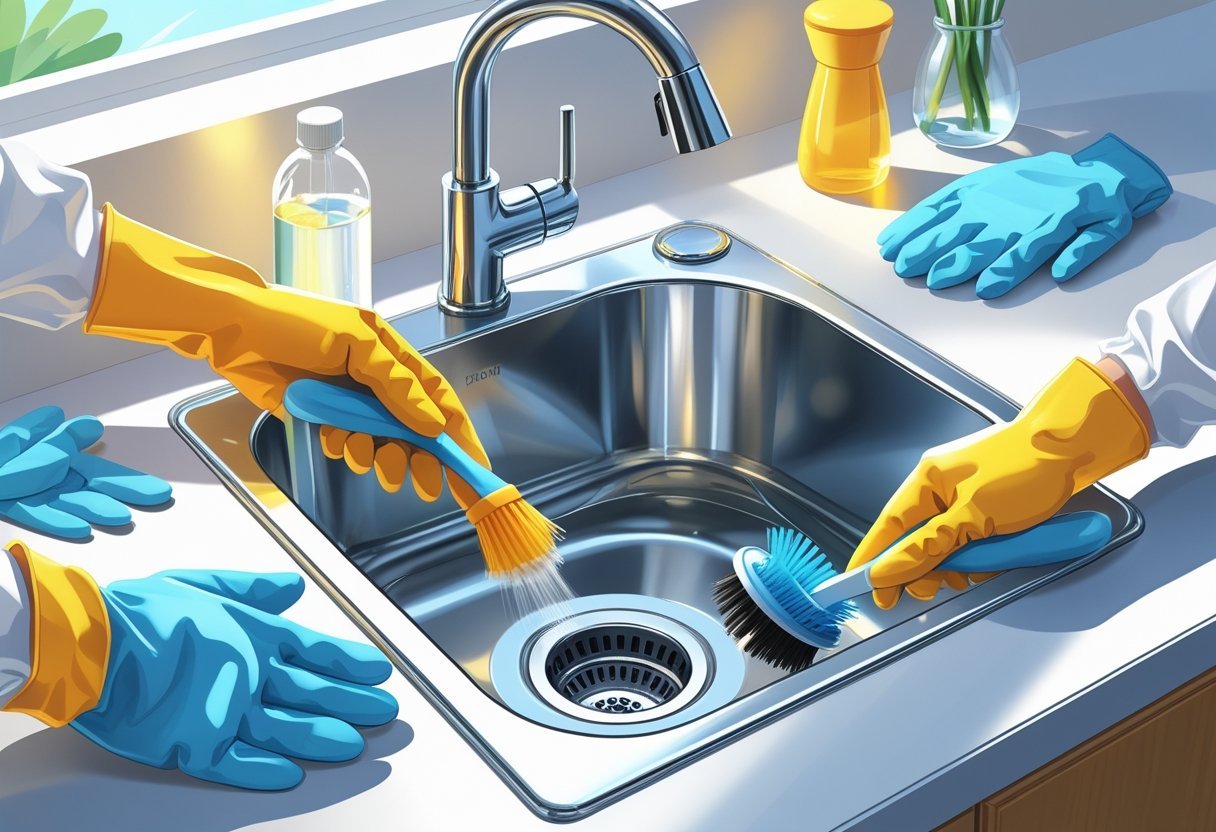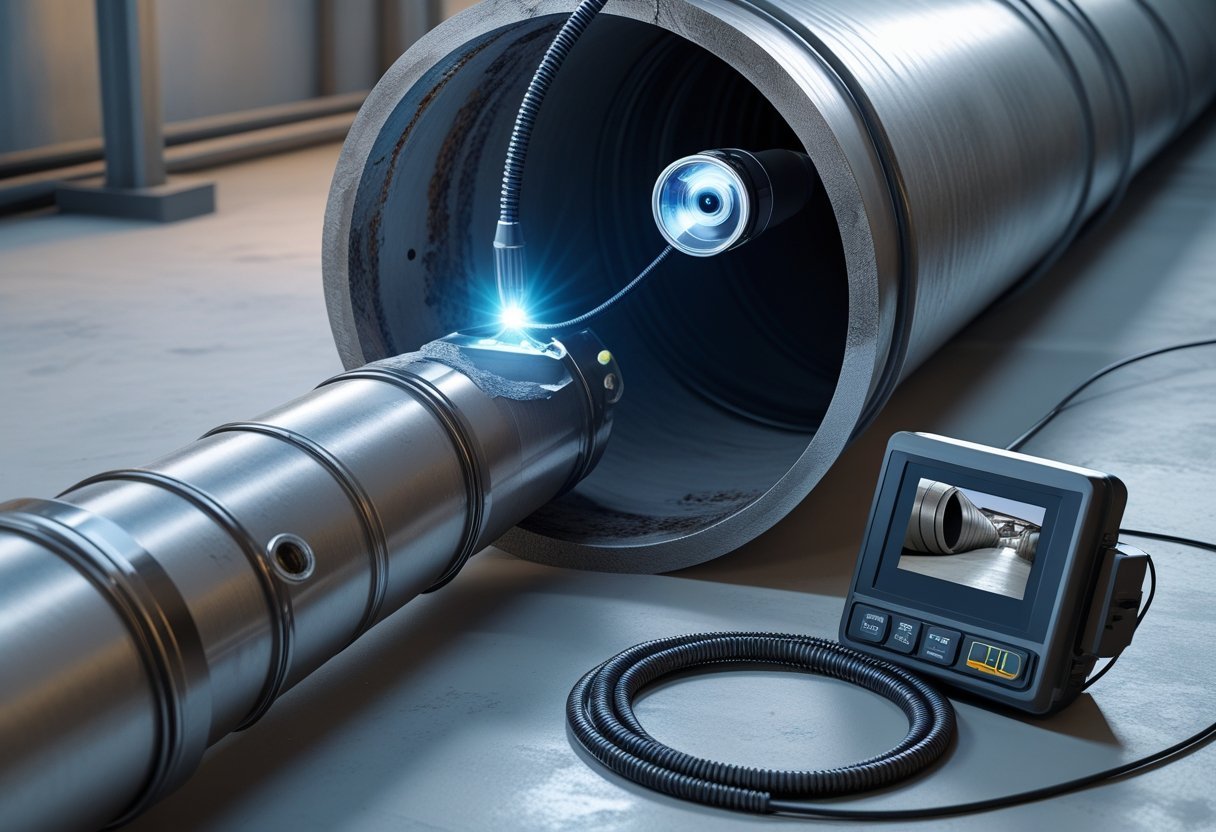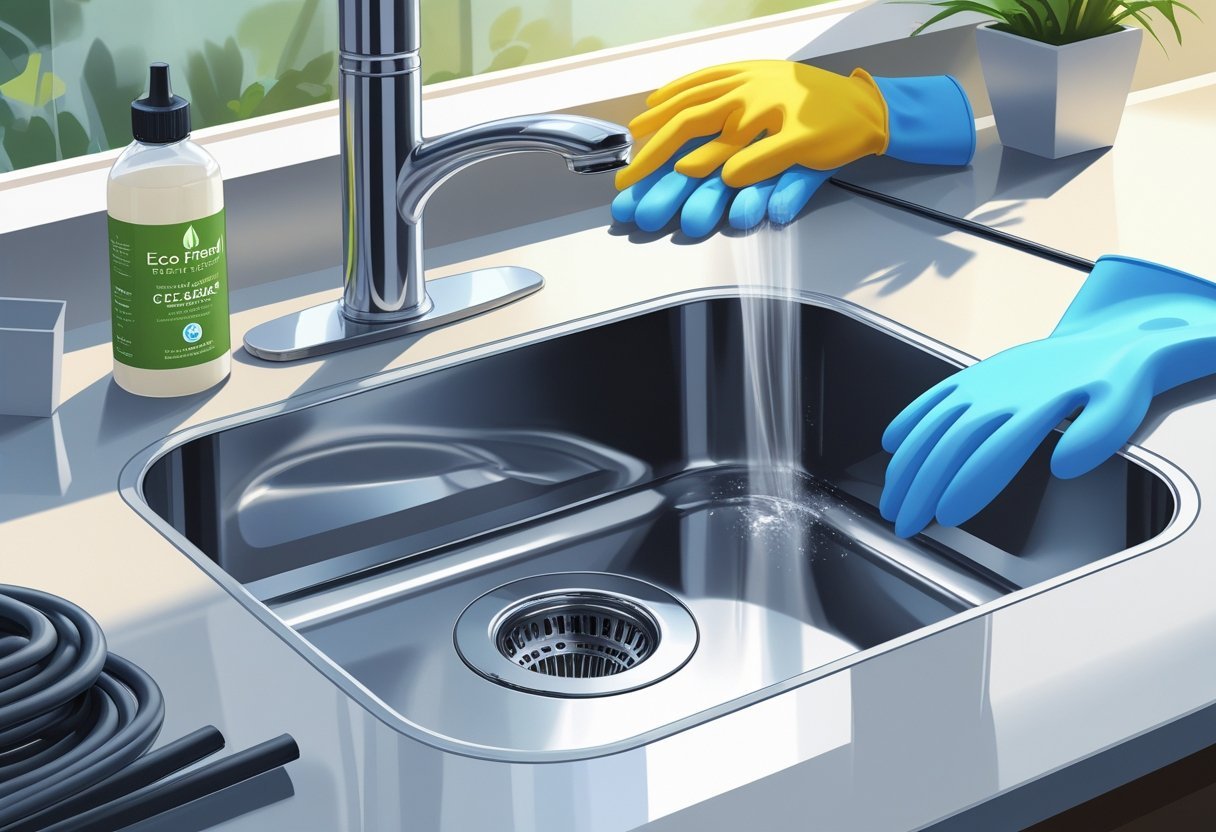When faced with a clogged drain, you might wonder how drain cleaners work to resolve the issue. These chemical solutions target clogs by generating heat and breaking down the materials causing blockages, such as grease and hair. Understanding this process can help you make informed decisions about the right solutions for your plumbing needs.
At Large View Plumbing & Heating, we know that effective drainage maintenance is crucial for your home. Drain cleaners typically contain components like lye or acids, which react with the clog, creating bubbles and heat that dissolve the blockage. This chemical reaction can often clear minor clogs, providing a quick solution when professional help isn’t immediately available.
While drain cleaners can be effective, it’s essential to use them carefully to avoid damaging your plumbing. For more severe or persistent clogs, contacting experts from Large View Plumbing & Heating can ensure that your drainage issues are resolved efficiently and safely. Our experienced team is dedicated to delivering quality service and maintaining the integrity of your plumbing system.
How Drain Cleaners Work
Understanding how drain cleaners operate is essential for effective clogs removal. This section covers the basic principles behind their function, the chemical reactions involved, and the crucial role of hot water in the cleaning process.
Basic Principles of Drain Cleaning
Drain cleaners typically fall into two categories: mechanical and chemical. Mechanical methods involve using tools to physically remove clogs, while chemical drain cleaners use substances that interact with clogging materials.
Chemical drain cleaners contain active ingredients that target organic matter, grease, or hair. When you apply these products, they may create heat, aiding in breaking down the clog. Understanding these principles can help you select the appropriate method based on the type of blockage you are facing.
Chemical Reactions Used in Drain Cleaners
Chemical drain cleaners often utilize powerful substances like lye or sulfuric acid. When mixed with water, these chemicals engage in exothermic reactions, generating significant heat. This heat helps dissolve clogs and facilitates the cleaning process.
For instance, when sodium hydroxide (lye) is added to water, it breaks down organic material, releasing gases like carbon dioxide. This chemical reaction not only helps clear the clog but also reduces odors. Always handle chemical drain cleaners with care, as their potency can pose risks if misused.
Role of Hot Water in the Cleaning Process
Hot water plays a vital role in enhancing the effectiveness of chemical drain cleaners. When used in conjunction, hot water helps dissolve the clog’s materials more efficiently. The heat from the water can activate the chemicals, allowing them to work more effectively.
When pouring hot water down the drain before or after using a chemical cleaner, you can help flush out any lingering residues. Large View Plumbing & Heating recommends this step for optimal results in drain cleaning. Always ensure that the pipes can handle high temperatures before applying hot water to avoid any potential damage.
Types of Drain Cleaners
When it comes to clearing clogs, a variety of drain cleaning options are available. You can choose between chemical solutions, enzymatic or biological products, and mechanical methods. Each type has its strengths and specific applications for different types of clogs.
Chemical Drain Cleaners
Chemical drain cleaners are popular for their effectiveness in quickly dissolving blockages. Many of these cleaners contain powerful agents like sodium hydroxide and potassium hydroxide, which react vigorously when mixed with water.
Lye is a common ingredient that generates heat to break down organic materials such as grease and hair. Another potent option is sulfuric acid, though it requires caution due to its corrosive nature. Using these products can often lead to swift results, but it’s essential to follow safety instructions provided by the manufacturer to avoid harm.
Enzymatic and Biological Options
Enzymatic drain cleaners offer a safer and more environmentally friendly alternative. These products use natural enzymes and bacteria to break down the clogging materials slowly over time.
They are most effective for organic matter, making them suitable for recurring issues. While they may take longer to clear a clog compared to chemical cleaners, the use of biological agents ensures that your pipes remain safe from damage associated with harsh chemicals. For ongoing maintenance, using these options helps in keeping drains clear without negative impacts on plumbing systems.
Mechanical Methods and Tools
Mechanical methods can be a reliable way to clear tough blockages without using harsh chemicals. Tools like a plunger are simple yet effective for minor clogs. You create pressure that forces the blockage to dislodge, often with just a few hard pushes.
For more stubborn clogs, a plumber’s snake or auger can reach deeper into the pipes to remove blockages. Large View Plumbing & Heating highly recommends these methods when chemicals are either ineffective or not desired. Mechanical solutions ensure you maintain a healthy plumbing system without risking chemical exposure.
Key Ingredients and Their Actions
Understanding the key ingredients in drain cleaners can help you make informed decisions. Each component has specific actions that contribute to breaking down clogs effectively.
Sodium Hydroxide and Lye
Sodium hydroxide, commonly known as lye, is a powerful alkaline substance used in many drain cleaners. It reacts with water to create heat, an essential aspect in breaking down fats and grease.
When lye comes into contact with organic materials, it can saponify fats, turning them into soap, which can then be washed away. This reaction is highly effective in kitchen drains that often accumulate grease.
Caution is necessary when handling sodium hydroxide. It can cause chemical burns and produce harmful fumes. Ensure you wear gloves and goggles, and follow safety guidelines when using products containing this compound.
Sulfuric Acid and Other Acids
Sulfuric acid is one of the strongest acids available for household drain cleaning. It works by breaking down organic material like hair, food, and soap scum.
The acid generates significant heat when combined with water, enhancing its ability to dissolve tough clogs. While very effective, sulfuric acid requires careful handling. It can cause severe damage to plumbing if used improperly.
Always follow the product instructions closely. An alternative includes using other acids, which might be less aggressive but still effective for lighter blockages.
Potassium Hydroxide
Potassium hydroxide, another caustic agent, operates similarly to sodium hydroxide but is less commonly found in commercial drain cleaners.
This compound is effective in breaking down protein-based materials. It’s particularly useful in situations involving hair clogs, as it reacts with the organic matter to dissolve it.
Like its counterpart, potassium hydroxide can present safety risks. Proper precautions are essential to avoid skin contact and inhalation of fumes.
For those dealing with stubborn clogs, consider consulting professionals. Large View Plumbing & Heating has the expertise to provide safe and effective solutions for your plumbing challenges.
Applications and Effectiveness
Understanding how drain cleaners work can help you effectively address plumbing issues. Their applications range from treating clogged drains to maintaining plumbing systems, and even extending to sewer lines and septic systems.
Treating Clogged Drains
When faced with a clogged drain, using a drain cleaner can be an immediate solution. These products often contain powerful chemicals, such as sodium hydroxide or sulfuric acid, which interact with the blockage and break it down effectively.
To use drain cleaners, pour the recommended amount directly into the clogged drain and allow it to sit for the instructed time. For tough clogs, you may need to repeat the process or use a combination with a plumber’s snake for better results.
Note: Avoid using drain cleaners on older pipes that may be more susceptible to damage.
Maintaining Plumbing Systems
Regular use of drain cleaners can help in maintaining your plumbing systems. By utilizing them periodically, you can prevent buildup that leads to clogs. This approach helps ensure that water flows smoothly through your pipes, reducing the risk of future plumbing issues.
Large View Plumbing & Heating recommends that homeowners consider their specific plumbing needs. Combining drain cleaning products with regular maintenance services can significantly enhance the longevity of your plumbing systems.
Tip: Schedule regular plumbing inspections to catch potential problems before they escalate.
Use in Sewer Lines and Septic Systems
Drain cleaners can be effective in sewer lines and septic systems, although caution is advised. In sewer systems, these chemicals can clear blockages, but improper use may harm the system’s bacterial processes vital for breaking down waste.
When dealing with septic systems, use drain cleaners sparingly. Maintaining the balance of bacteria is crucial to a healthy septic system. Products designed specifically for septic systems are available and often safer.
For comprehensive assistance, consult professionals at Large View Plumbing & Heating. Their expertise can guide you through appropriate maintenance and cleaning solutions tailored for your plumbing setup.
Safety Considerations and Best Practices
When using chemical drain cleaners, safety and proper handling are crucial to minimize risks. Understanding potential hazards, environmental impacts, and best practices for usage can help protect you and your home.
Proper Handling and Storage
Always handle chemical drain cleaners with care. Store them in a cool, dry place out of the reach of children and pets. Ensure that the original container is tightly sealed to prevent leaks or accidental ingestion.
When using these cleaners, wear appropriate personal protective equipment (PPE), such as gloves and safety goggles. This protects you from spills and splashes. Never mix different cleaning agents, as this can create dangerous reactions.
If you’re unsure about a product, consult with professionals like those at Large View Plumbing & Heating. Their expertise can guide you in selecting the safest options for your needs.
Potential Hazards
Chemical drain cleaners can pose several risks. Many contain harsh ingredients that can cause skin burns, respiratory issues, or eye damage. Always read labels for proper usage and recommended safety precautions.
Ingesting these cleaners, even in small quantities, can be harmful. Ensure that you have adequate ventilation when using them. If you’re using hot water in conjunction, be careful to avoid burns from steam or splashes.
Following guidelines and using caution can help you avoid accidents. Familiarize yourself with emergency procedures in case of spills or contact with skin.
Environmental Impacts
Using chemical drain cleaners can negatively affect the environment. These substances often contain corrosive chemicals that can contaminate water sources if not disposed of properly.
You should consider eco-friendly alternatives when possible. Natural cleaners can be effective and have far less impact on the environment.
If you must use a chemical drain cleaner, always follow instructions closely for disposal after use. This minimizes environmental harm and complies with local regulations.
Using Cleanout Plugs Safely
Cleanout plugs are essential for accessing drains but must be used carefully. Ensure that the area is well-ventilated before removing a cleanout plug. Be prepared for potential buildup of pressure or standing water.
When opening a cleanout plug, wear safety goggles and gloves to protect against any hazardous materials that may escape. It’s advisable to have a bucket ready to catch spills that can occur during the process.
If you’re uncertain about your plumbing system, contacting Large View Plumbing & Heating for assistance is wise. Their experienced team can navigate these tasks safely and efficiently.
Frequently Asked Questions
Understanding how drain cleaners function can help you use them more effectively. This section addresses common inquiries regarding their chemical composition, effectiveness on clogs, safety measures, and application techniques.
What is the chemical makeup of drain cleaners?
Drain cleaners typically contain strong chemicals like sodium hydroxide, sulfuric acid, or bleach. Sodium hydroxide, for instance, effectively breaks down materials through a chemical reaction, generating heat to dissolve clogs.
Can drain cleaners efficiently dissolve hair clogs?
Yes, many drain cleaners can dissolve hair clogs. Chemicals like sodium hydroxide transform hair into a substance that can be washed away, but effectiveness may vary based on the clog’s composition and severity.
What are the safety precautions to take when using drain cleaners in the bathroom?
When using drain cleaners, always wear gloves and safety goggles to protect against splashes. Ensure the area is well-ventilated. Avoid mixing different types of cleaners, as this can create dangerous reactions.
What is the most effective method for applying drain cleaner in a shower drain?
To apply drain cleaner in a shower drain, first remove any visible debris. Pour the recommended amount of product directly into the drain, allowing it to sit for the specified time before flushing with hot water.
How do different types of drain cleaners vary in their mechanisms of action?
Different drain cleaners work through various mechanisms. Caustic cleaners generate heat and break down organic material, while acidic cleaners dissolve minerals and rust. Choosing the right type depends on the nature of the clog.
Is there evidence of certain drain cleaners performing better than others?
Yes, some drain cleaners are proven to work more effectively based on specific clog types. Research and customer reviews can provide insights on the most efficient products. For reliable plumbing solutions, consider the expertise of teams like Large View Plumbing & Heating, who understand effective approaches to drain issues.
